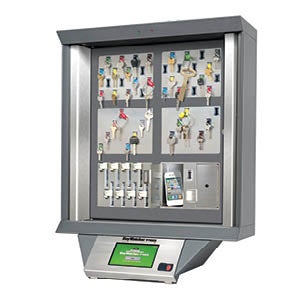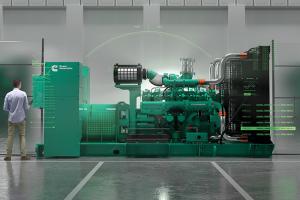Access control vendors address many challenges

Image from dormakaba
Hospitals are high-volume, high-traffic facilities, so they require access control solutions that can handle many people with different credentials and authorizations. Additionally, they must control these access points without losing their welcoming community-based missions.
Another factor is the need to protect equipment, medication and property from theft and misuse, as well as the need to protect staff and patients from violence. As a result, applications are expanding into areas beyond emergency rooms and intensive care.
Providing access control solutions that meet the needs of these many applications is a challenge. Facilities managers want to know the specifics of how access control solutions will fit into their environment — from installation to ergonomics. Whether it’s the emergency room, behavioral health areas, diagnostic imaging or the intensive care unit, each area has its own precautions and requirements for how doors operate, as well as who needs access where and when.
Critical challenges
“Balancing security with convenience is critical. That’s why it’s important for hospitals to work closely with consultative experts from manufacturers who can help ensure they find the right solution for the specific needs of their facility,” says Dominic Rizzo, business development manager for health care at Assa Abloy Opening Solutions in New Haven, Conn.
Another challenge is infection control, which has been magnified the past couple of years by COVID-19. Effective access control can help mitigate the spread of infections by controlling traffic flow and creating touchless openings. “Allegion’s blind survey found that 85% of hospitals have or plan to reduce access to areas that were previously open,” says Melany Whalin, demand generation manager for health care at Allegion, Carmel, Ind. “In addition, 82% have added or plan to add touchless door hardware to openings.”
Hospitals, which were once open environments, have had to redesign spaces to reflect today’s security needs. While HIPAA has prompted some changes (e.g., using access control to protect records, audit trails for removal of information, etc.), growing rage-related violence, especially in emergency rooms, has led to the introduction of electrified locking solutions, according to Mark J. Berger, president and chief product officer at Securitech Group Inc., Maspeth, N.Y.
“We have seen an uptick in the use of electrified locking solutions in behavioral health care facilities,” Berger says. “Our company created sallyport systems, or interlocks, used on ward entry doors, specifically to prevent patient elopement. In New York state, we created lever trim with electric release and key override so that a staff member can leave a ward at any time, regardless of whether the interlock was active, to meet contractual requirements.”
With space at a premium, more hospitals are requesting access control panels in rack-mount configurations to save on wall space, according to Rick Focke, director of product management for enterprise access control at Johnson Controls, Milwaukee. “Use of contactless biometric readers is trending up, as hospitals look to go touchless to reduce exposure. They also are looking to use a self-service approach to managing access rights, versus having all requests funneled through administrative personnel.”
The purpose of an access control solution is no longer about only restricting access, says Dave Stolerow, national business manager for security products and services at Siemens Smart Infrastructure USA, Buffalo Grove, Ill. “Now more than ever, manufacturers are being asked how an access control solution, or combination of security and buildings systems integrated together, can provide an improved experience for patients, visitors and staff.”
Off-site health care facilities pose their own set of challenges. “Because they are remote, they may not have connectivity to the systems used to control access via the main hospital, so being able to issue and revoke access credentials can be a challenge,” says Matt Welty, vice president of the Americas for Codelocks, Rancho Cucamonga, Calif. “We supply products for these facilities that facilitate granting and revoking access rights without the need to connect to a central system.”
Smaller off-site facilities rarely have the budgets to install access and door control solutions designed with advanced features and capabilities typically engineered with larger facilities in mind, according to Bryan Sanderford, national sales manager at Dortronics Systems Inc., Sag Harbor, N.Y. “Dortronics specializes in door control solutions for small- and mid-sized health care facilities so they can employ mantraps, or interlocks, in areas with as few as two doors. Solutions such as this allow smaller facilities to deploy protective measures at affordable price points without compromising security.”
Often the best option for off-site facilities is to install stand-alone electronic keypad locks that can be upgraded to a wireless or hardwired access control solution when resources permit without losing the initial investment, according to Bill Macdonald, end user consultant at dormakaba Americas in Indianapolis. “Our main contact at an off-site facility is likely to be the facilities director rather than someone solely focused on security or access control. Understanding this helps us suggest turnkey or easy-to-install solutions to address security needs.”
Increased connectivity
In recent years, access control equipment and devices have expanded with relation to artificial intelligence, networking, data gathering and the Internet of Things. Networking capabilities have grown due to the wide range of technologies available in integrated access control locks. “From intelligent Wi-Fi and real-time wireless to power over ethernet (PoE) and open supervised device protocol, there is an option for every application,” Rizzo says. “With some facilities looking for sustainable, energy-efficient choices, PoE is an excellent option.”
Morse Watchmans Inc. USA, Oxford, Conn., offers key management solutions with the capability to network and integrate with other physical security systems in hospitals. “Our system allows multiple cabinets to be synced for use in disparate locations across a campus or throughout a facility, and our open architecture platform makes a variety of integration solutions possible to meet health care security needs,” says Tim Purpura, vice president of global sales and marketing. “All programming, authorizations, remote functions and reports for the key control system can be managed remotely. Also, notifications and events can be automatically sent to authorized personnel, and built-in schedulers can be programmed to automatically download data.”
Johnson Controls has introduced several facial authentication devices to the health care market that provide a fast, touchless access control experience. “Many of these units operate with or without a mask covering part of the face, and some provide tailgate detection, which is very important in high-security areas,” Focke says. “We’ve also upgraded our access workflow option to provide a self-service portal for occupants to request access privileges, with approvals performed by the area’s owners, all without administrative involvement.”
Siemens Smart Infrastructure USA has developed a range of security analytics that expand access control capabilities. “When Siemens analytics are deployed across an SiPass integrated access control solution, displays are created to provide actionable information for security operators that can enhance physical security and system uptime,” Stolerow says. “Some analytics provide information on room utilization and operational efficiency.”
Other innovations
The latest product introductions cover a wide range of applications. Assa Abloy Opening Solutions offers Intelligent Keys and eCylinders, a retrofit solution that looks and installs like a simple mechanical lock cylinder but adds a practical level of electronic access control to existing doors, according to Rizzo. “The company also offers LifeSafety intelligent power systems that increase the reliability of the security infrastructure, and prewired power systems that decrease labor while providing more consistent installations across a hospital. They enable smart monitoring that provides a holistic view of a facility’s networked solutions.”
dormakaba Americas, Indianapolis, is bundling existing products in new ways to meet rapidly changing needs due to the pandemic. In large hospital settings, the company has installed wireless access control solutions that use Bluetooth technology to ensure that staff always have their credential in their smartphones. “There are still some challenges to overcome in this scenario due to data sharing and HIPAA regulations, but we expect the use of this technology to become more widespread,” Macdonald says.
dormakaba Americas also is working to spread the footprint of wireless access control into more hospital settings. “For example, we’ve been able to provide access control to areas less frequently used such as engineering and environmental service spaces,” Macdonald says. “The biggest challenge to widespread use is maintenance responsibilities, which must be addressed prior to adding the solution to any facility.” Battery life is a big maintenance issue due to staff reductions in engineering positions on many hospital campuses, he adds. “In addition, it is hard to find qualified technicians who can service low-voltage access control devices associated with wireless solutions, and also service mechanical door hardware.”
Codelocks recently introduced several KitLock products that are applicable to the hospital market. The KL1100 is available in both radio-frequency identification and keypad configurations. Both feature a front controller plate with a continuous surface that is easily cleaned and has no recesses where dirt and germs can gather. “There have been several additions to our KL1000 KitLock family as well,” Welty says. “We now offer a KL1000+, which handles multiple user codes simultaneously or a countdown 24-hour timer. Our new KL1000 G3 incorporates these features along with a mechanical key override and batteries that can be changed from the front of the lock.”
Morse Watchmans Inc. USA offers the KeyWatcher Touch to store, manage and track keys. Its modular and expandable design allows users to configure the components, such as key or card modules or storage lockers, for personal assets. “Key removals and returns are easy to track and audit via TrueTouch software through scheduled or on-demand reports, or through the server network,” Purpura says.
Allegion offers a variety of mobile credential solutions, including Bluetooth and near-field communication options, according to Whalin. This allows hospitals to seamlessly integrate a variety of systems and easily control visitor management. In addition, it allows facilities to issue credentials instantly by sending a link to the user’s phone. “We’ve also introduced access control products for touchless openings to help mitigate the spread of infections. Our LCN 6400 Compact Series easily converts an interior door to touchless by adding a low-energy auto operator to an opening with an existing LCN door closer. This allows for more cost-effective contactless openings throughout the facility.”
Axis Communications, Chelmsford, Mass., has introduced a camera station secure entry system, which combines video surveillance and access control capabilities. It allows for trouble-free management of a single site, offering operators a complete overview of everything that’s happening on the premises. “With this solution, users can identify visitors and get automatic alerts in case of incidents. One operator can monitor the video and access control at the same time,” says Paul Baratta, health care segment development manager.
More intelligence
In the future, access control manufacturers predict the development of systems that will provide more intelligence beyond just keeping track of who enters and exits an area.
Patient occupancy trends, traffic patterns and relative door usage, location awareness for employees, and lone worker monitoring are just a few examples of what will be achieved via future connected systems.
Neal Lorenzi is a freelance writer and regular contributor based in Mundelein, Ill.
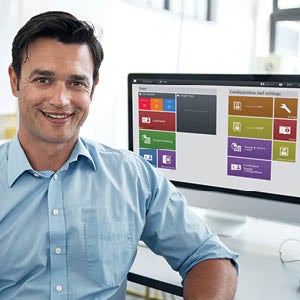
TRACKING TRAFFIC
The SiPass integrated access control makes it easy to manage large amounts of traffic flowing through a hospital. Siemens
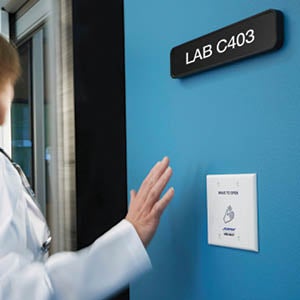
NO HANDS
Safer2Open solutions allow doors to operate in a hands-free or touchless manner. Assa Abloy
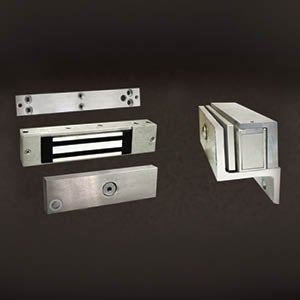
ACCURATE ACCESS
The 1107 x EDR delayed egress actuating locks are designed to limit access of patients and their visitors without limiting access by medical staff. Dortronics
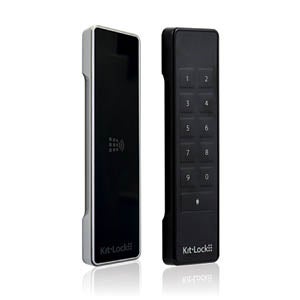
EASY UPGRADE
The KL1000 G3 is suitable for replacing keyed cam locks commonly supplied on a wide range of lockers, cabinets and cupboards. Codelocks
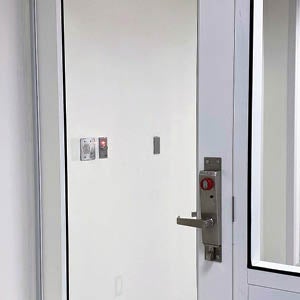
TOP TRIM
RACHIE trim is used in interlocks to control entry and meet specific behavioral health needs. Securitech
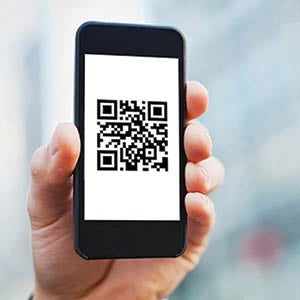
CAREFUL CREDENTIALING
Visitor Access makes it easy for small sites to grant visitors access using a QR code as a credential. Axis Communications
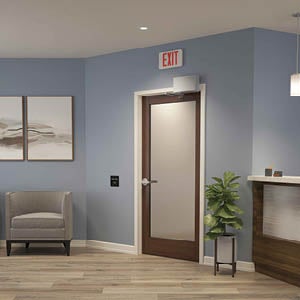
TOUCH FREE
This LCN compact auto operator easily converts an opening to touchless using the existing LCN door closer. Allegion
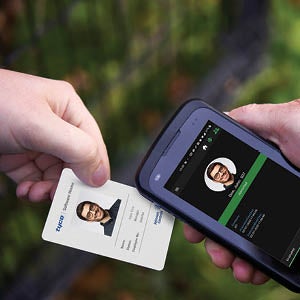
REMOTE CONTROL
This mobile handheld reader facilitates remote credential validation. Johnson Controls
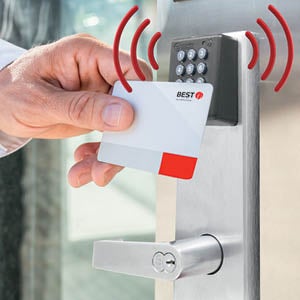
MULTITASKING
WI-Q technology by BEST supports multiple credential formats, manages user access wirelessly from a centralized platform, and performs updates every 60 seconds. dormakaba
Neal Lorenzi is a Mundelein, Ill.-based contributor to Health Facilities Management.


